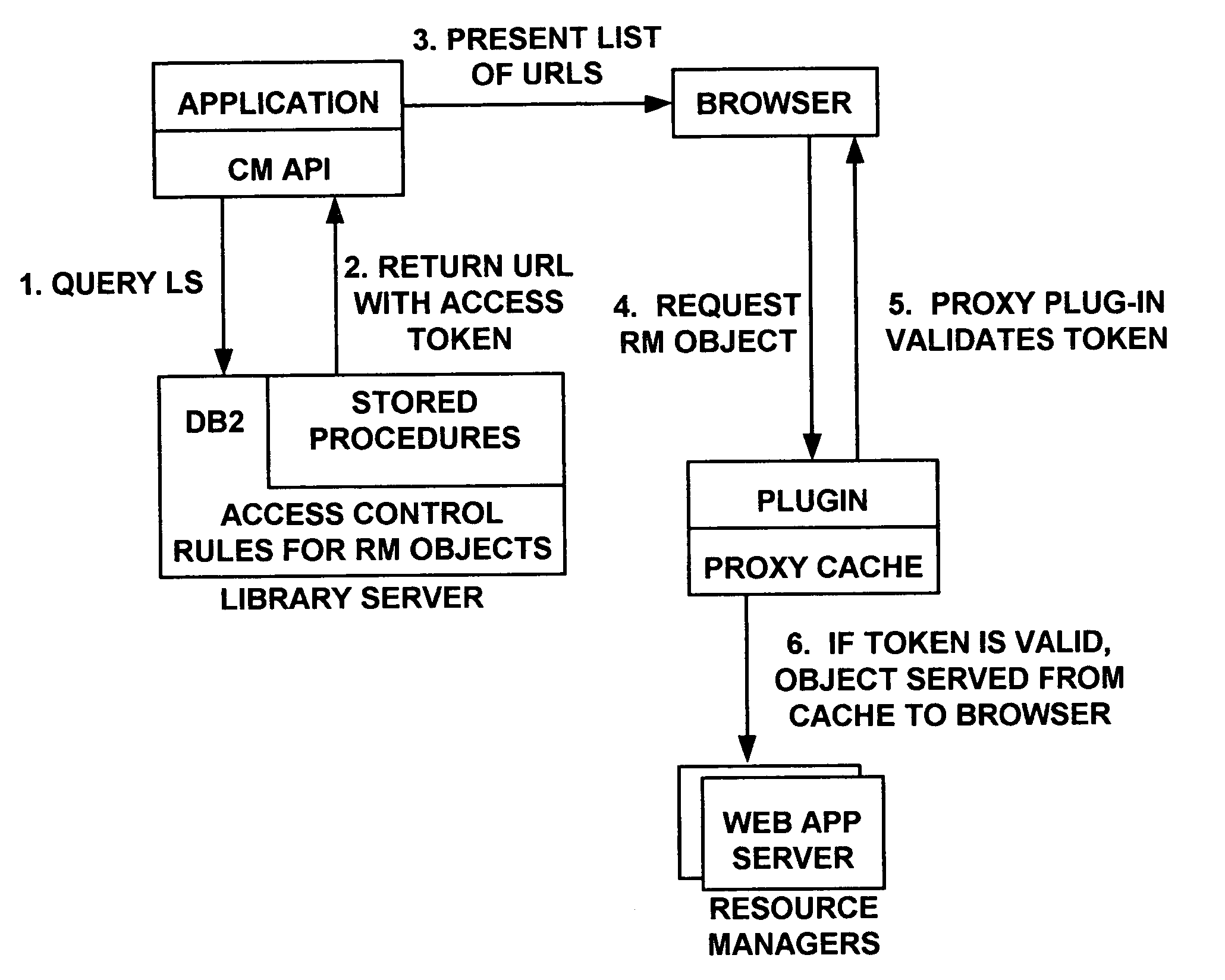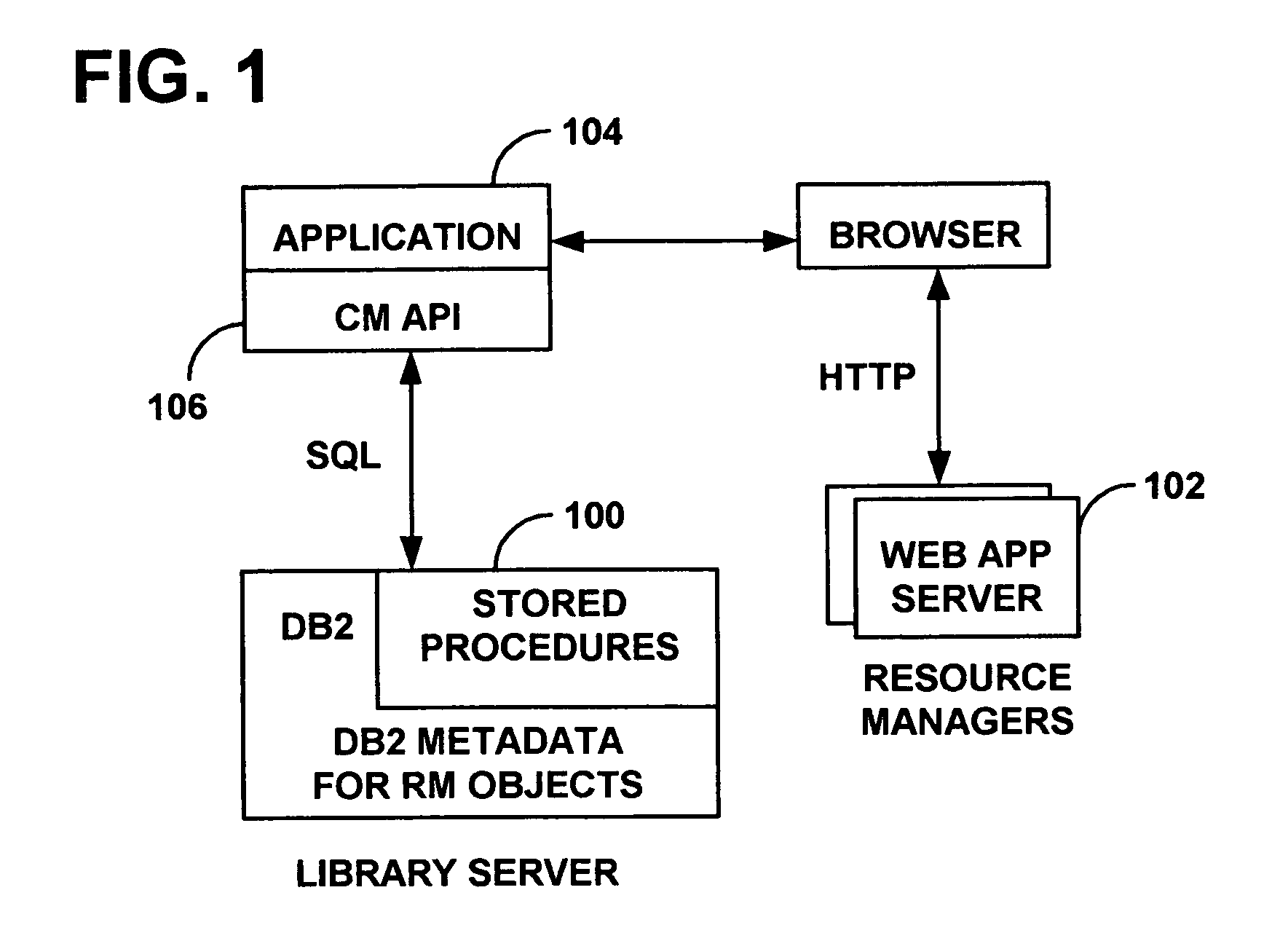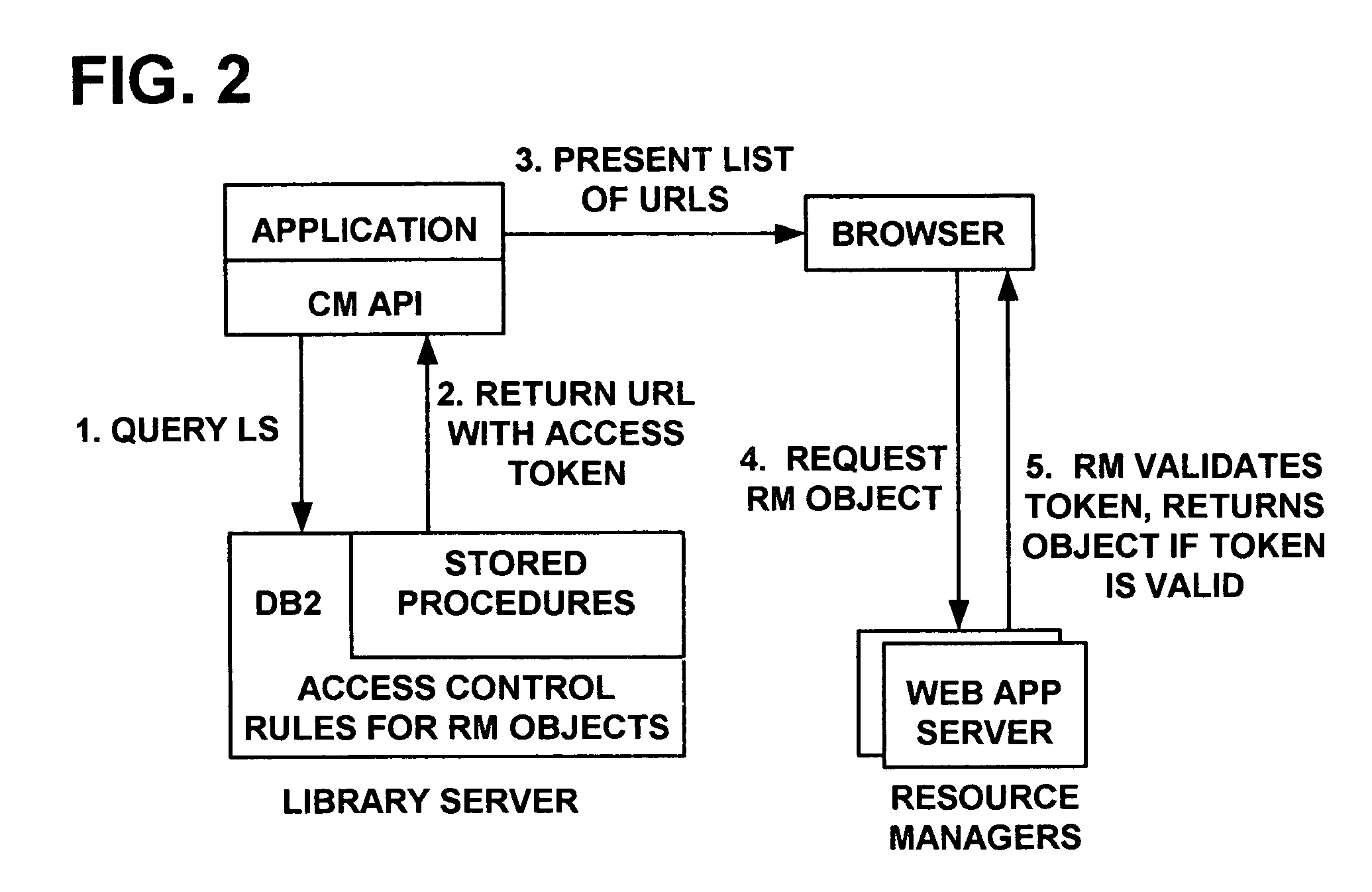System and method for regulating access to objects in a content repository
a content repository and object technology, applied in the direction of securing communication, digital transmission, instruments, etc., can solve the problem that the library server may not trust the resource manager to behave properly, and achieve the effect of improving content management and distribution
- Summary
- Abstract
- Description
- Claims
- Application Information
AI Technical Summary
Benefits of technology
Problems solved by technology
Method used
Image
Examples
first embodiment
[0039] In a first embodiment, the proxy cache plug-in calls back to the Resource Manager. This approach requires additional functionality at the Resource Manager servlet to respond to a request to indicate whether a URL contains a valid access token which would allow retrieval of the given object. The response from the Resource Manager is simply “yes” or “no”, i.e. the token is either valid or invalid for ‘retrieve’ access to the object specified in the URL. The Resource Manager does not deliver the object.
[0040] The WSES cache proxy plug-in of the first embodiment intercepts requests to retrieve Resource Manager objects. If the plug-in determines that the object requested is already cached, then the plug-in generates an HTTP request which is sent to the Resource Manager. The request is composed of the information about the Resource Manager object contained in the original request being serviced by the cache proxy, but rather than a request to retrieve the object, the request is onl...
second embodiment
[0042] In a second embodiment, the cache proxy plug-in validates tokens locally. If an object is cached, the plug-in extracts the access token from the URL. First, a comparison is made between the current time and the token expiration time, Tx. If the token has not expired, the MAC H is computed as described earlier. If H matches the MAC h contained within the token, the content is served from the cache. This method of integrating Content Manager and the WSES cache proxy thus enables the cache to serve Content Manager content while enforcing the Content Manager access control rules.
[0043] Referring now to FIG. 4, the access control flow including caching is shown. The primary difference is that after the Resource Manager object is requested in step 4, the proxy cache 300 checks first to see if the object is cached as shown in step 5. If the object is cached, then the plug-in performs the token validation locally as shown in step 6. If the object is not cached, the request flows to t...
third embodiment
[0046] the present invention introduces public / private key technology to Content Manager access control tokens, and mitigates the problems of secret key storage and distribution and is believed to be the best mode of practicing the invention. This approach keeps the token validation logic at the cache proxy as illustrated in FIG. 4, but introduces public / private key technology. The Library Server and Resource Manager are updated with a new method for generation / validation of access tokens. Public key cryptography can be used to digitally sign documents [Sch]. The token generated at the Library Server contains a digital signature for the Resource Manager object. The Resource Manager can then validate that digital signature before delivering the object.
[0047] A public key cryptosystem relies on a pair of keys: a public key and a private key. In general, one key of the pair is used for encryption and the other key is used for decryption. For example assume Kpu is the public key and Kpr...
PUM
 Login to View More
Login to View More Abstract
Description
Claims
Application Information
 Login to View More
Login to View More - R&D
- Intellectual Property
- Life Sciences
- Materials
- Tech Scout
- Unparalleled Data Quality
- Higher Quality Content
- 60% Fewer Hallucinations
Browse by: Latest US Patents, China's latest patents, Technical Efficacy Thesaurus, Application Domain, Technology Topic, Popular Technical Reports.
© 2025 PatSnap. All rights reserved.Legal|Privacy policy|Modern Slavery Act Transparency Statement|Sitemap|About US| Contact US: help@patsnap.com



